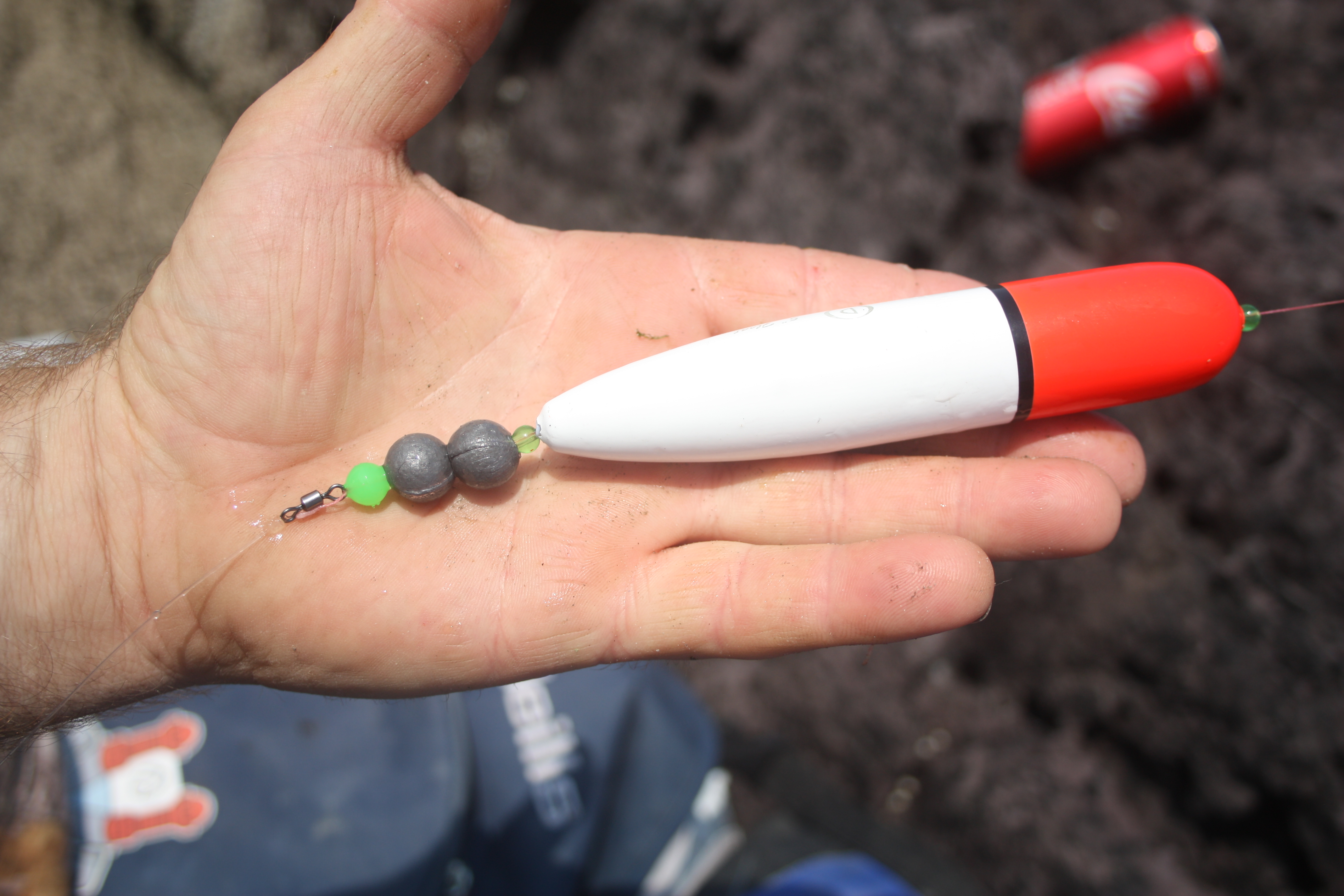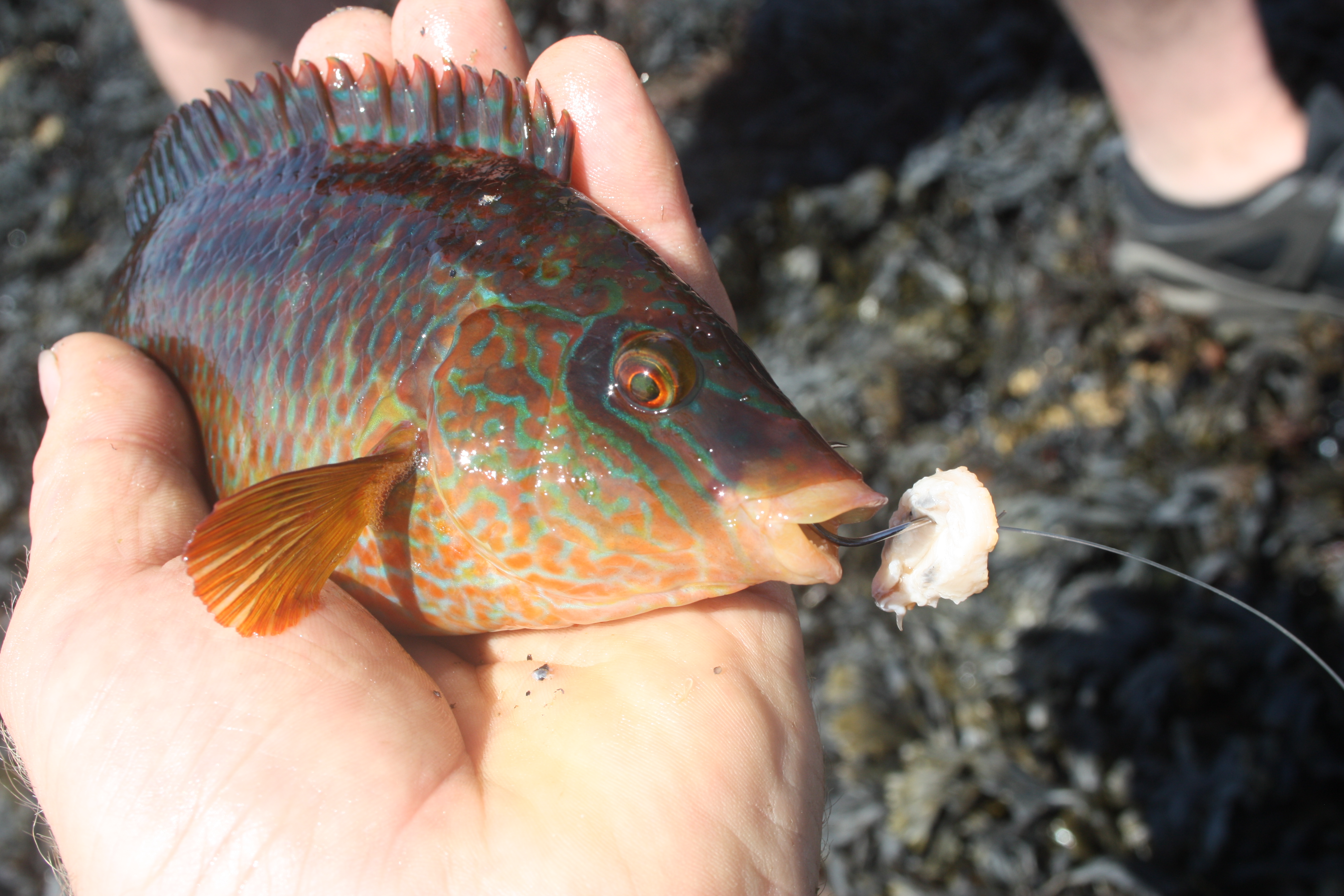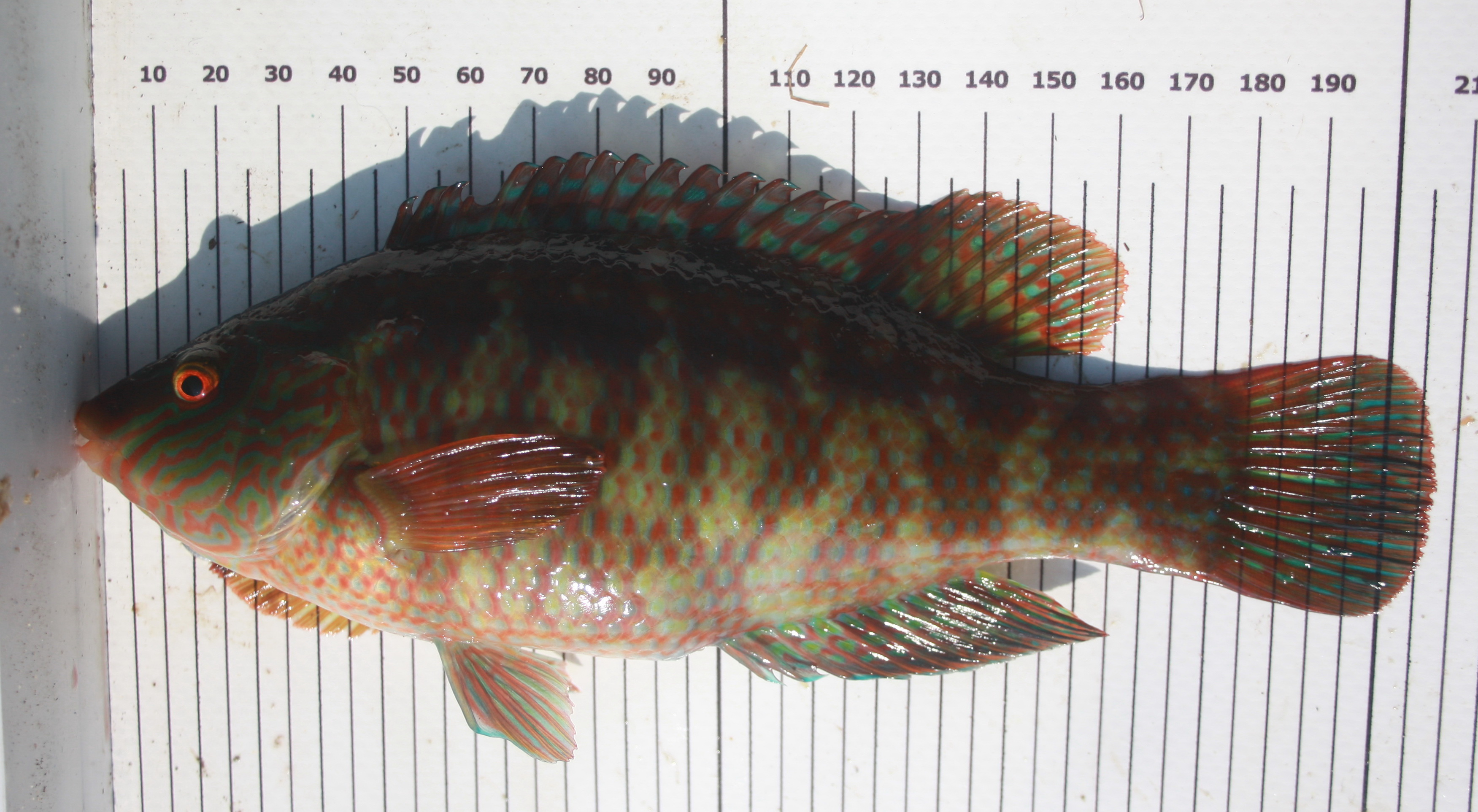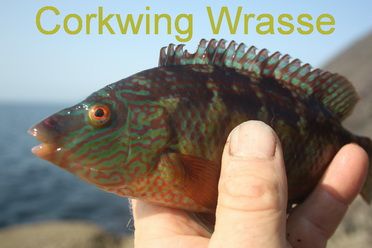Wrasse, Corkwing
Corkwing Wrasse (Symphodus melops)
Irish Record To be announced
Specimen 200 grams or 24cms total length
Identification Smaller than the average Ballan Wrasse, with vivid, striking colouration running in "veins" or stripes from the mouth, back towards the gill cover. Mouth is small, for "picking" over barnacles etc.
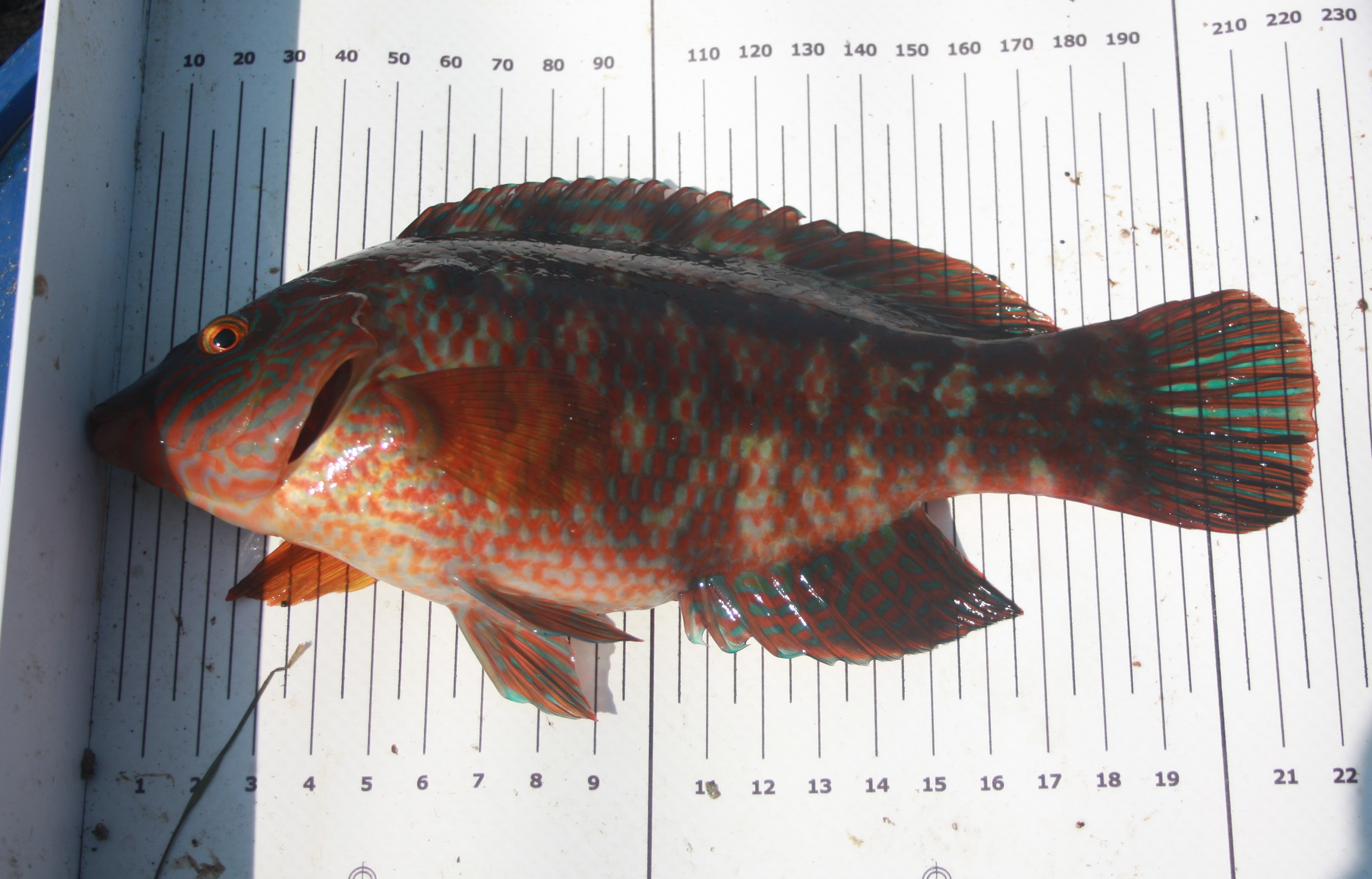
Standard Corkwing Wrasse
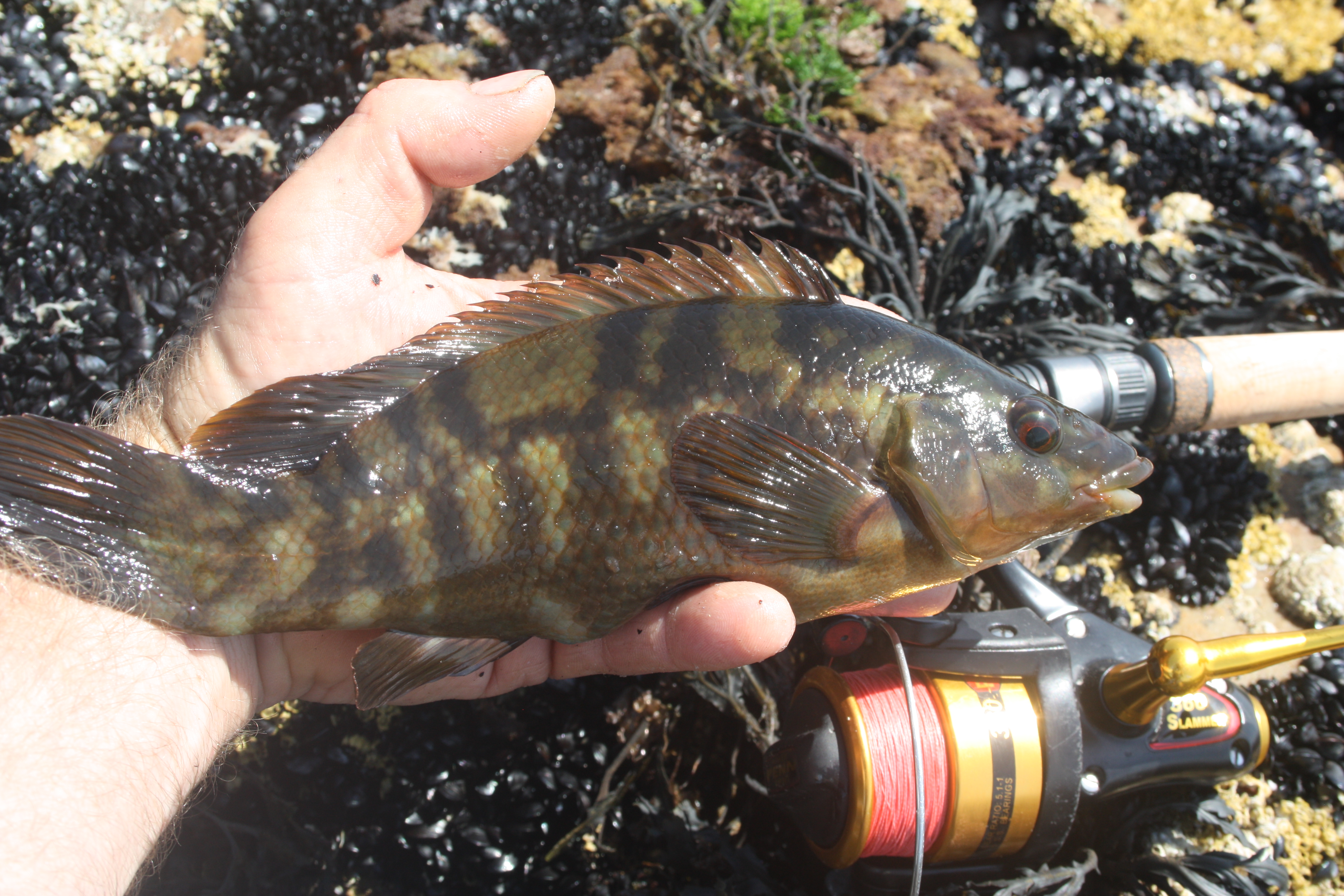
Not to be confused with a Ballan Wrasse, colour variations are infinite
Where to catch
A recent addition to the list of eligible specimens to target in Ireland, this is regarded as a mini-species, rarely growing larger than 28cms. One of five popular Wrasse species that inhabitat our inshore waters of Ireland, and can be found around the entire coast.
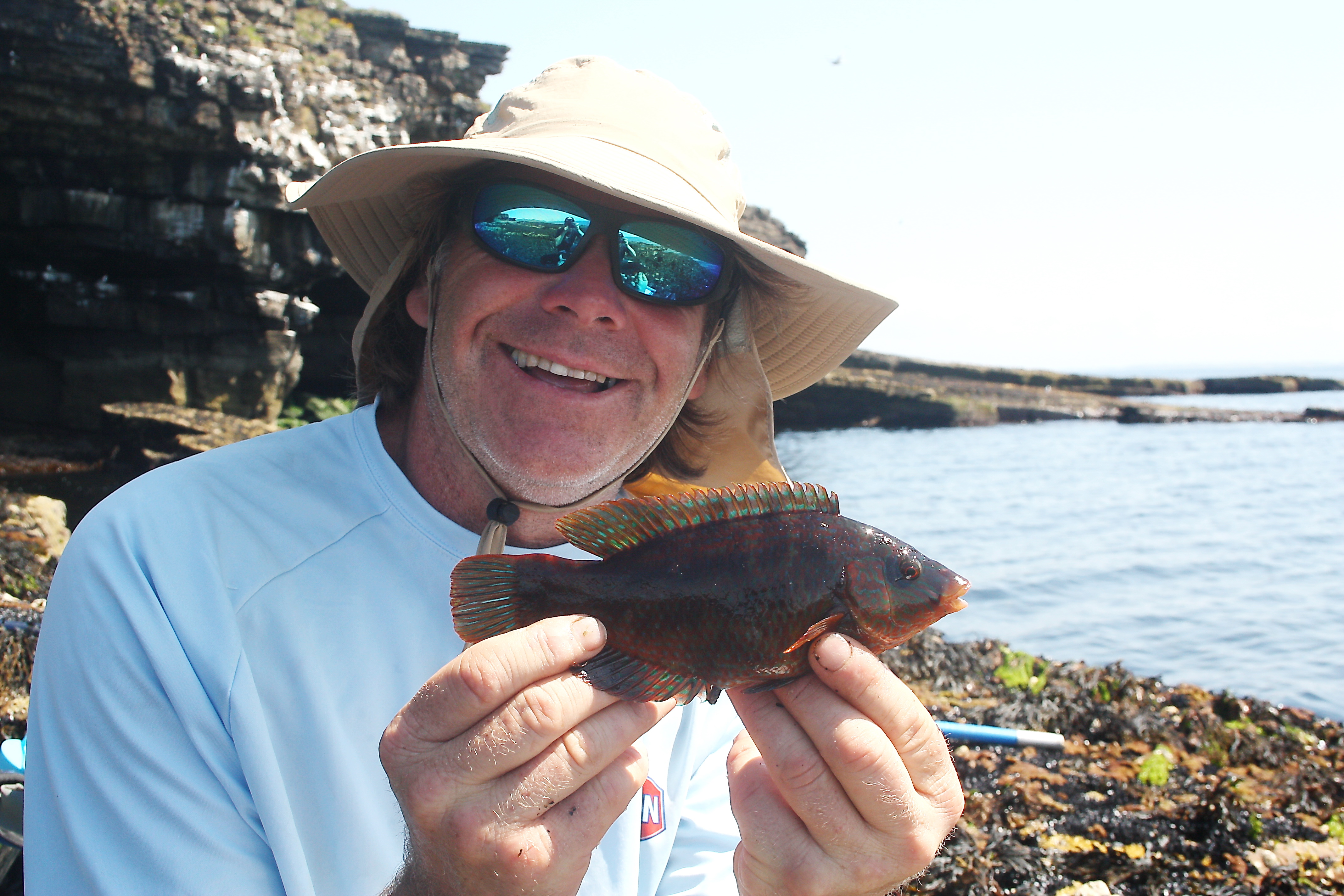
Target them by scaling down the gear, hook sizes, bait etc, and target close inshore, almost under your feet at times. Almost any rocky or kelp ridden inshore mark has the likelihood of holding a handfull of Corkwing Wrasse.
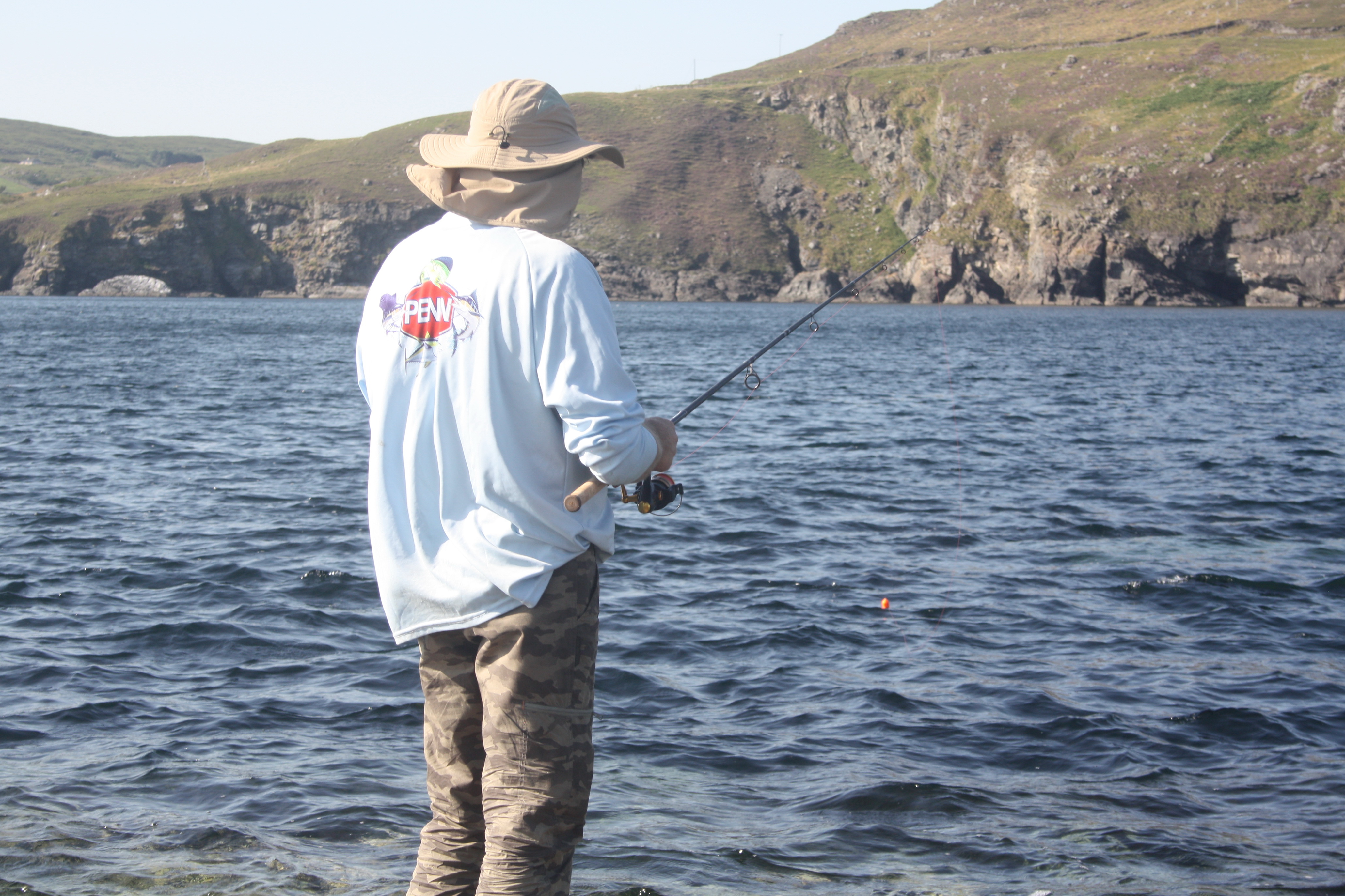
Typical Wrasse habitat
When to catch
Most of the year, but generally the summer months and in to late Autumn are peak times.
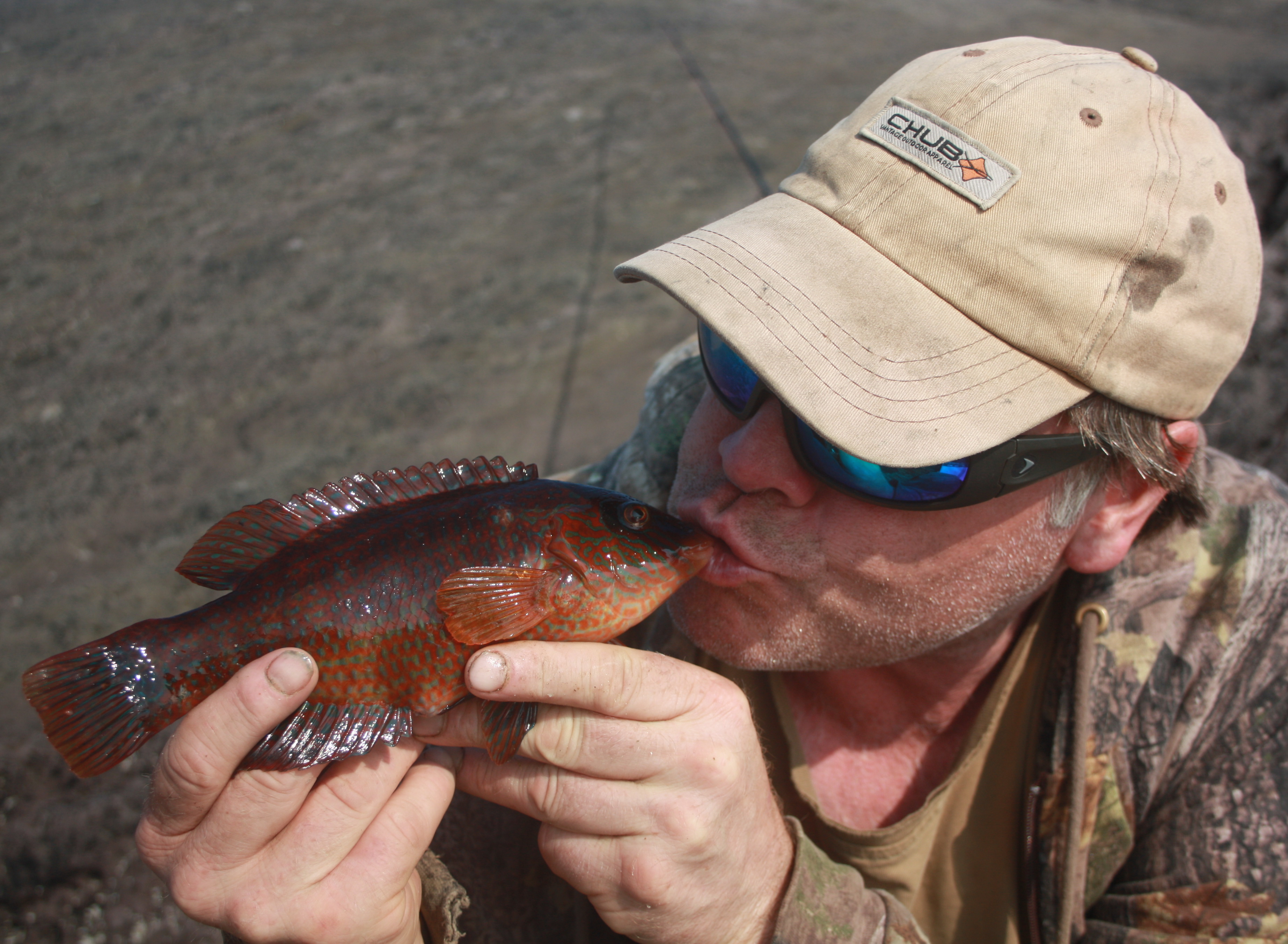
A Corkwing Wrasse over Irish Specimen size
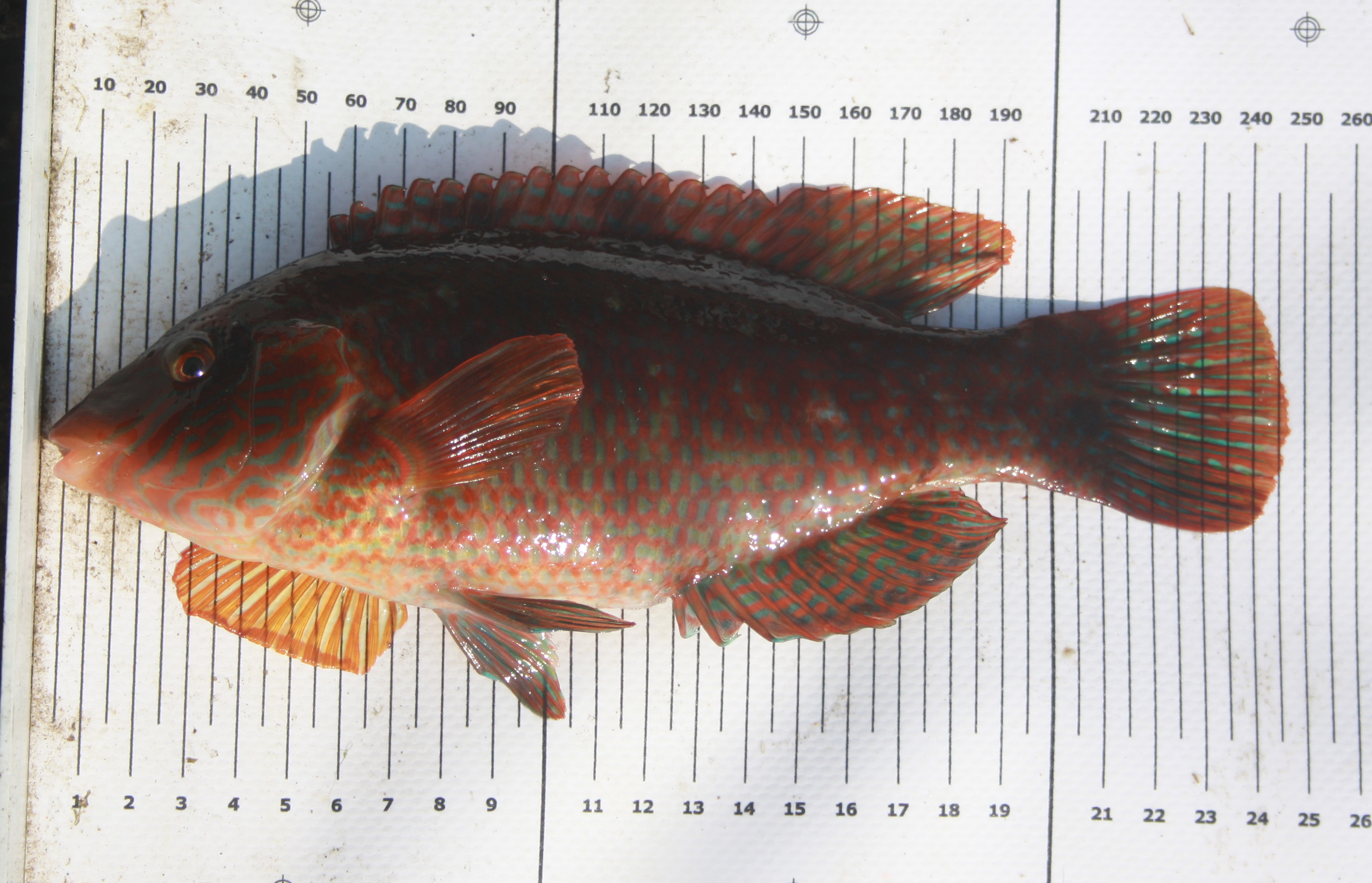
Bait
Any small baits typical to the habitat, such as pieces of Limpet, Mussel, Peeler Crab legs, bits of Ragworm, Lugworm, small pieces of fish flesh and Harbour Rag. Can be taken whilst LRF (light rock fishing) with small lures, and artificial worm baits such as Berkley "Gulp".
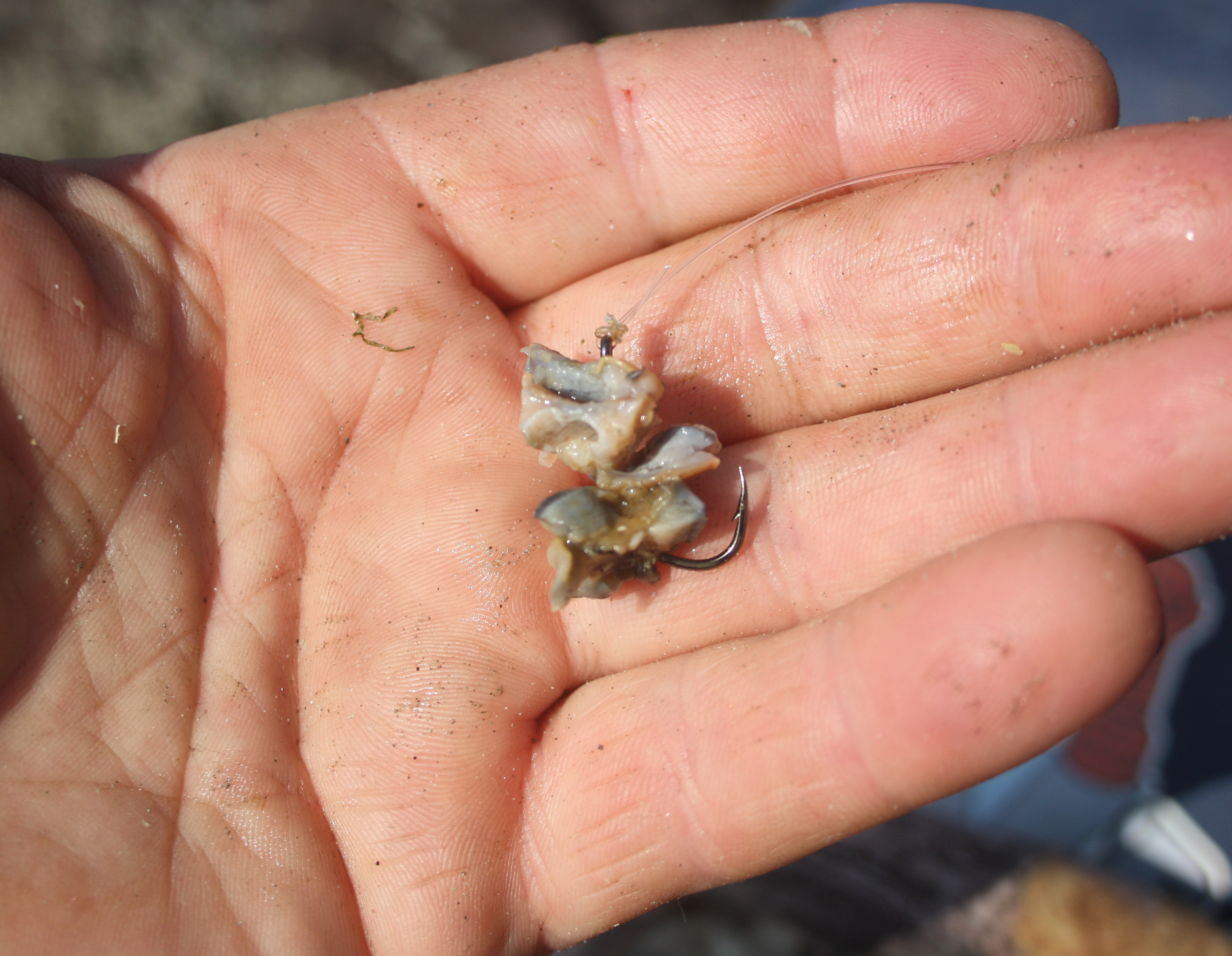
Pieces of Limpet on a size 6 Carp Hook
Methods
As previously mentioned, LRF gear with tiny lead-heads, "Gulp" artificial worm baits, or go natural with worm or fish baits on ledger gear or float gear. It all works very well. I prefer float fishing, usually with two hooks, one for Ballan Wrasse, and a smaller size 6 Carp hook for the Corkwings. I use strong Carp hooks, as there is no guarantee that you wont hook a much larger and powerful Ballan Wrasse, Trigger Fish or Pollock, and you want to land anything that takes an interest.
